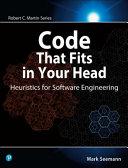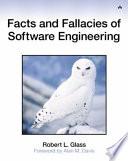
Code That Fits in Your Head
Heuristics for Software Engineering
The latest title in Addison Wesley's world-renowned Robert C. Martin Series on better software development, Code That Fits in Your Head offers indispensable practical advice for writing code at a sustainable pace, and controlling the complexity that causes too many software projects to spin out of control. Reflecting decades of experience consulting on software projects and helping development teams succeed, Mark Seemann shares proven practices and heuristics, supported by realistic advice. His guidance ranges from checklists to teamwork, encapsulation to decomposition, API design to unit testing and troubleshooting. Throughout, Seemann illuminates his insights with up-to-date code examples drawn from a start to finish sample project. Seemann's examples are written in C##, and designed to be clear and useful to every object-oriented enterprise developer, whether they use C#, Java, or another language. Code That Fits in Your Head is accompanied by the complete code base for this sample application, organized in a Git repository to facilitate further exploration of details that don't fit in the text.
- ISBN 13 : 9780137464401
- ISBN 10 : 0137464401
- Judul : Code That Fits in Your Head
- Sub Judul : Heuristics for Software Engineering
- Pengarang : Mark Seemann,
- Penerbit : Addison-Wesley Professional
- Bahasa : en
- Tahun : 2021
- Google Book : http://books.google.co.id/books?id=s2hJzgEACAAJ&dq=intitle:software+engineering&hl=&source=gbs_api
-
Ketersediaan :
Code That Fits in Your Head is accompanied by the complete code base for this sample application, organized in a Git repository to facilitate further exploration of details that dont fit in the text.









